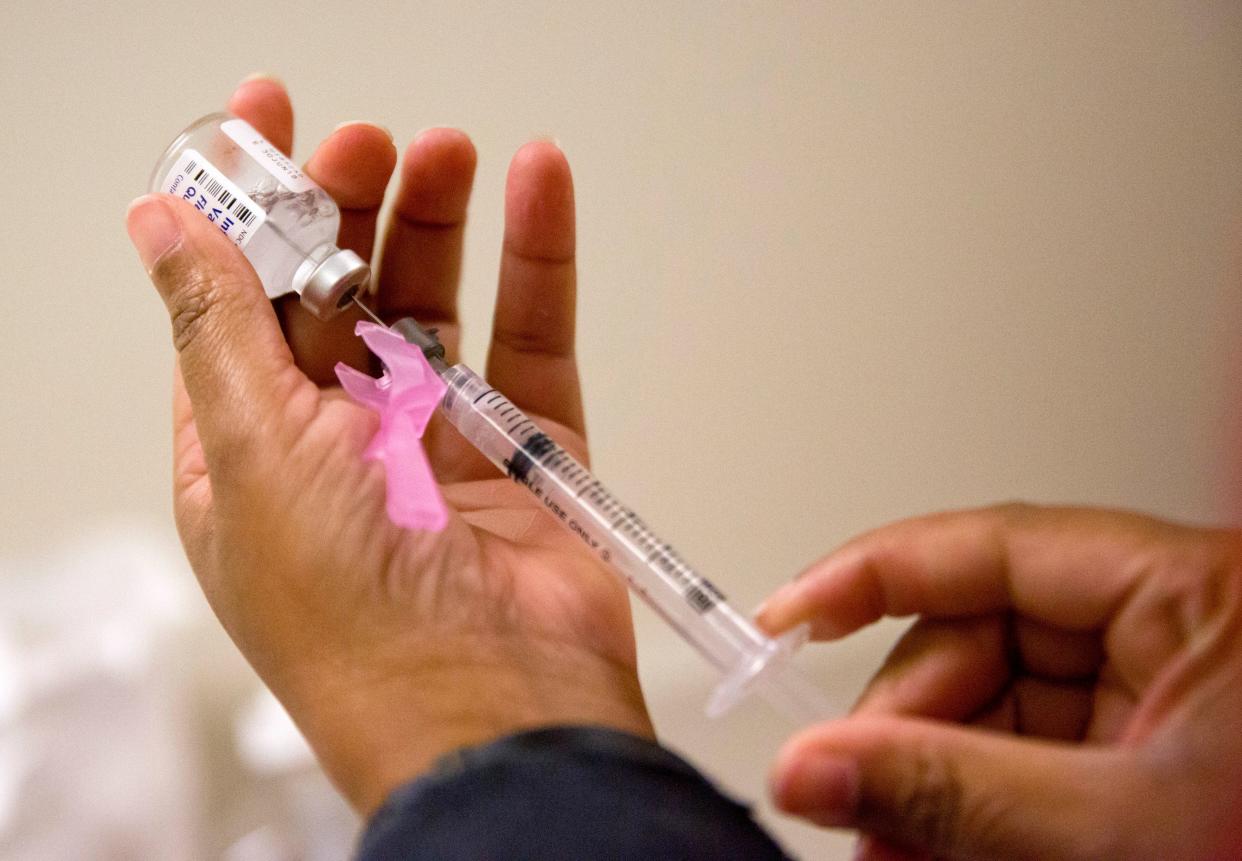It's flu season, and the new book 'Influenza' says you should get your flu shot!

Last month, one of my patients told me that her belly button had gone numb after she got the flu shot. It was her first time receiving the vaccine and, she said, most certainly her last.
As we discussed the unlikely possibility that the jab was to blame, I mentioned that I had just read a new book, "Influenza: The Hundred Year Hunt to Cure the Deadliest Disease in History" by Jeremy Brown (Touchstone, 272 pp., ★★★ out of four).
It’s by a doctor who has vast experience treating the virus, and it sheds some new light on one of our most confounding and deadly pathogens. (The 1918 influenza pandemic, known as Spanish flu, resulted in the deaths of more than 50 million people.)
Here are five key takeaways from a book that marks its centennial:
1. Doctors think about influenza very differently.
The author, a longtime emergency room physician, reveals that he almost never orders a rapid flu test because “its result will be of no consequence to the way I will treat the patient.”
I scratched my head when I read that; I’m an internist and I order the test almost every day during the winter because its result can alter the way I treat patients. We both have our reasons, and it’s useful to know there’s not a unified approach to testing.
2. Flu forecasting is a big business.
Google, the Centers for Disease Control and Prevention (CDC), and a variety of blogs and websites continually track the virus, but nobody really knows what to do with all of the information. We might have a sense of where the virus is heading, but we can’t predict whom it will infect. Medical centers run at (or near) full capacity, and it’s tough to make room for a potential patient with influenza who may never arrive. Like a seat on an airplane, a hospital bed generates no revenue if it’s not filled.
3. We’re preparing for Armageddon.
Unmarked warehouses, scattered across the country, contain our Strategic National Stockpile of emergency medicines and supplies. The chemical cache of antibiotics, vaccines, antidotes and antiviral medications was created by the CDC in 1999 and costs hundreds of millions of dollars per year to maintain. That's about all they'll tell us; the rest is classified.
4. The best flu drug isn’t very good.
Tamiflu, the antiviral most doctors use to treat influenza, shortens sickness by about a day. That's it. For years, it's been the go-to drug for doctors treating the flu. But this may soon change: On Oct. 24, the United States Food and Drug Administration approved Xofluza (baloxavir marboxil) to treat influenza, but we're not quite sure how well it will work. For now, the best treatment is prevention. Get vaccinated.

5. Not if, but when.
The next pandemic will probably be caused by a virus, and there's a good chance it will be influenza. Brown shows us how viral particles mutate, nimbly evading whatever medications we throw at it.
Although this book occasionally gets bogged down in medical jargon, and some of the material has been covered in more detail elsewhere, it’s a nice entry point for fans of serious science and those who have questions about the flu vaccine. I recommended it to my patient.
Matt McCarthy, MD, is an internist and author of the forthcoming book, "Superbugs: The Race To Stop an Epidemic."
This article originally appeared on USA TODAY: It's flu season, and the new book 'Influenza' says you should get your flu shot!

